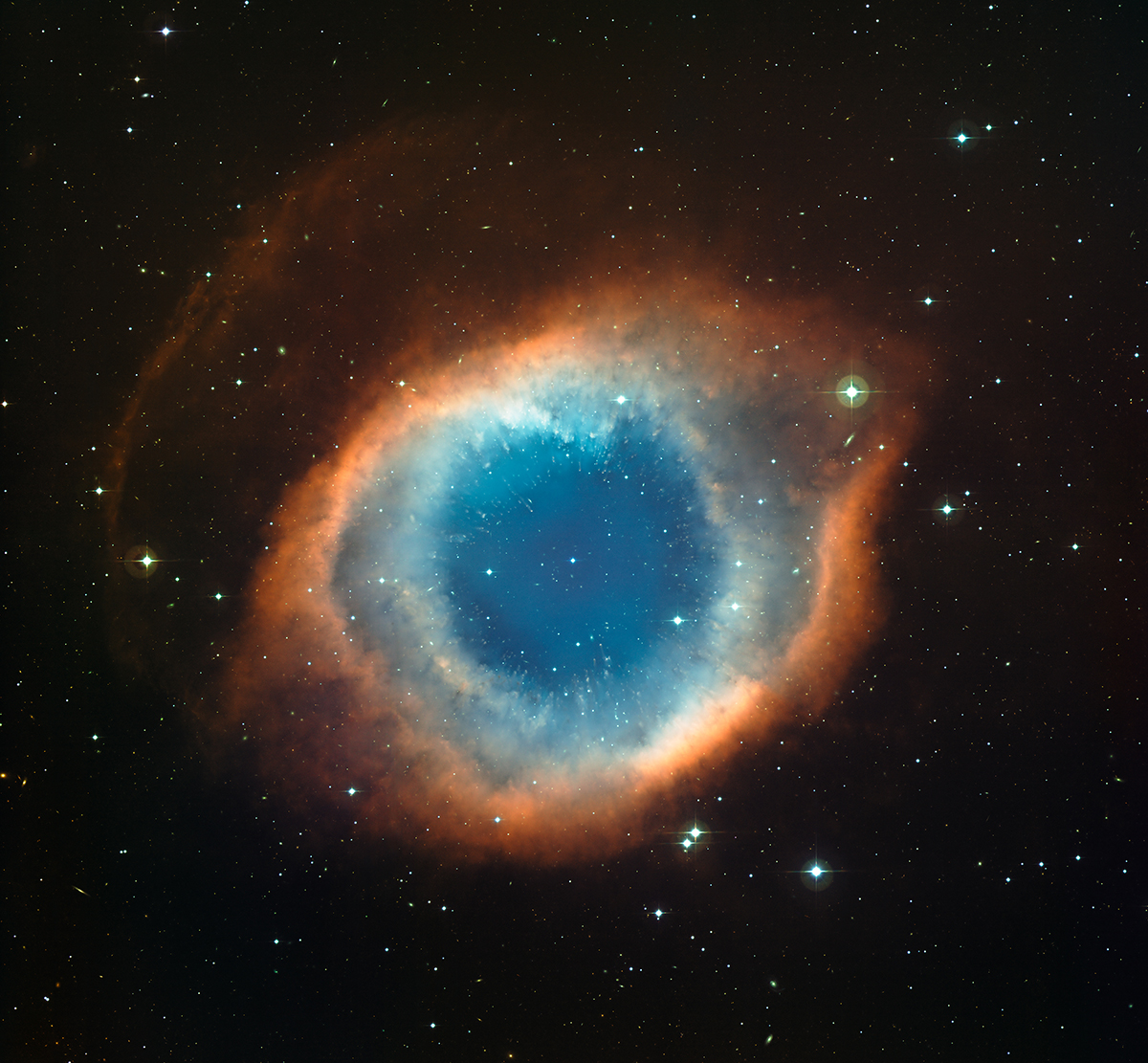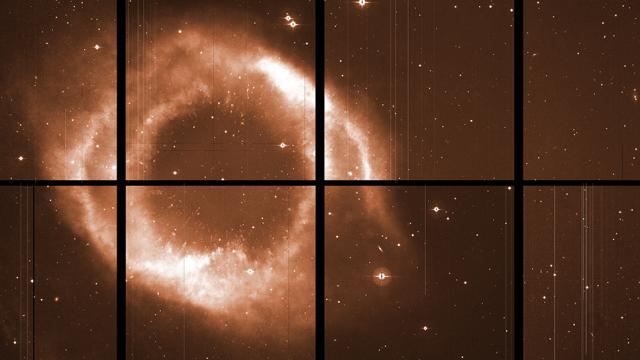These days, we’re all used to seeing colourful, saturated, high-resolution images of the weird and wonderful things that make up our universe. But they don’t start off life looking quite as pretty.
This (perhaps not terribly inspiring) image of the Helix nebula is how most space images you see start out: scrappy. It was captured by a device that images radiation at the La Silla observatory in Chile’s Atacama desert.
You’ll notice that the image is broken to eight frames. That’s an artefact of the sensors that are used, and the gaps are usually filled in by images taken from slightly different angles. There are also a fair few defects — like the vertical and horizontal lines you can see — which have to be removed.
Then, finally, the same image is shot through blue, green and red filters to identify light contributions from specific gases. Once combined, you get the kind of result pictured below — which we’re far more used to seeing. But, personally, I find the image above particularly charming. [New Scientist]

Pictures: ESO
